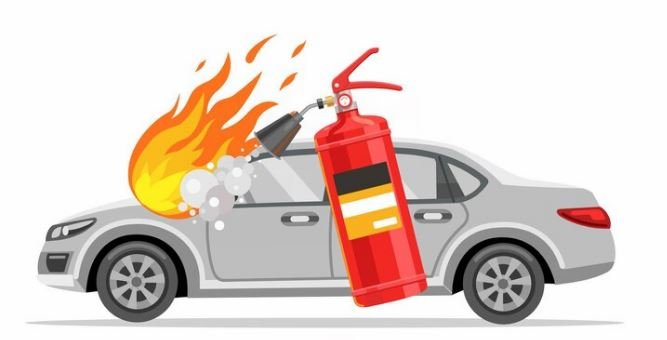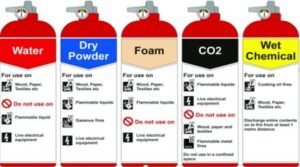Car Fire Extinguisher - Ensuring Safety on the Road

In this comprehensive guide, we’ll delve into the importance of car fire extinguisher, the different types available, and a step-by-step guide on how to use them effectively.In the hustle and bustle of our daily lives, we often take for granted the safety measures required for unexpected events, such as a car fire. While the idea of a car catching fire may seem rare, the consequences can be severe and even fatal. That’s why having a car fire extinguisher is an essential safety precaution that every vehicle owner should consider.
Understanding the Importance of Car Fire Extinguisher

Statistics and Risks
Legal Requirements
Types of Car Fire Extinguisher

ABC Dry Chemical Fire Extinguisher
CO2 Fire Extinguisher
Water and Foam Fire Extinguisher
Choosing the Right Car Fire Extinguisher
Size and Capacity
Mounting and Accessibility
Step-by-Step Guide on Using a Car Fire Extinguisher
Assess the Situation
Retrieve the Fire Extinguisher
Pull the Pin
Aim at the Base of the Fire
Squeeze the Handle
Sweep Side to Side
Variety of Fire Extinguishers

Water-Based Fire Extinguisher
• Effective for Class A fires (wood, paper, textiles).
• Not recommended for use in electrical or combustible liquid fires.
Foam Fire Extinguisher
• Versatile, suitable for Class A and B fires (flammable liquids).
• Forms a barrier to prevent re-ignition.
Dry Powder Fire Extinguisher
• Effective for Class A, B, and C fires (electrical).
• Suitable for use in mixed-risk environments.
CO2 Fire Extinguisher
• Ideal for electrical fires.
• Leaves no residue, minimizing damage.
Wet Chemical Fire Extinguisher
• Specifically designed for kitchen fires (Class K).
• Creates a cooling effect and prevents re-ignition.
Classification of Fires:
Understanding the fire classification is crucial for selecting the appropriate fire extinguisher:
Class A: Ordinary combustibles (wood, paper).
Class B: Flammable liquids (gasoline, oil).
Class C: Electrical fires.
Class D: Combustible metals.
Class K: Kitchen fires involving cooking oils.
Residential Settings
- Kitchen Fires: Fire extinguishers are crucial in kitchens where grease fires or other cooking-related fires may occur.
- Bedrooms and Living Areas: Fires can start from electrical appliances, faulty wiring, or other sources, making it important to have a fire extinguisher on hand.
Commercial and Industrial Spaces
- Offices: Fire extinguishers are placed strategically to address potential fire hazards, such as electrical equipment or paper documents.
- Warehouses: Large open spaces with diverse materials may require various types of fire extinguishers based on the potential fire risks.
Educational Institutions
- Classrooms: Fire extinguishers are installed in classrooms to address potential fire hazards, including electrical equipment and teaching materials.
- Laboratories: Chemical fires are a concern in laboratories, requiring specialized fire extinguishers suitable for dealing with flammable liquids.
Retail Establishments
- Stores and Shops: Fire extinguishers are positioned near potential fire sources, such as electrical outlets or storage areas.
- Restaurants: Kitchen areas and dining spaces may require specific types of fire extinguishers to address cooking-related fires.
Healthcare Facilities
- Hospitals and Clinics: Fire extinguishers are strategically placed to address fire risks in patient rooms, laboratories, and other areas.
- Pharmacies: Chemical fire risks in pharmacies may necessitate specific types of fire extinguishers.
Transportation
-
- Vehicles: Car Fire extinguishers can also be used in commercial vehicles, buses, and some private vehicles to address engine fires or other emergencies.
- Aircraft: Aircraft are equipped with specialized fire extinguishing systems to handle fires in different areas of the plane.
Recreational Areas
- Campsites: Portable fire extinguishers may be carried for use in outdoor cooking areas or campfires.
- Boats and Marinas: Fire extinguishers are required on boats to address potential fires caused by fuel or electrical issues.
Construction Sites
- Construction Equipment: Fire extinguishers may be mounted on heavy machinery to address fires caused by mechanical failures or fuel leaks.
- Temporary Structures: Portable fire extinguishers are essential for addressing fire risks in temporary construction offices or storage areas.
Remember that it is crucial to use the right type of fire extinguisher for the specific class of fire (Class A, B, C, D, or K), specifically car fire extinguisher which one can make it available at the time of travelling and to follow proper safety procedures. Regular maintenance and training on fire extinguisher usage are also essential to ensure their effectiveness in an emergency.
Conclusion
A car fire extinguisher is an indispensable tool that can mean the difference between a manageable situation and a catastrophic event. By understanding the risks, selecting the right type, and learning how to use it effectively, vehicle owners can take a proactive approach to safety on the road. This comprehensive guide aims to empower readers with the knowledge needed to make informed decisions and protect themselves and their loved ones in the event of a car fire. Remember, when it comes to safety, preparedness is key.
